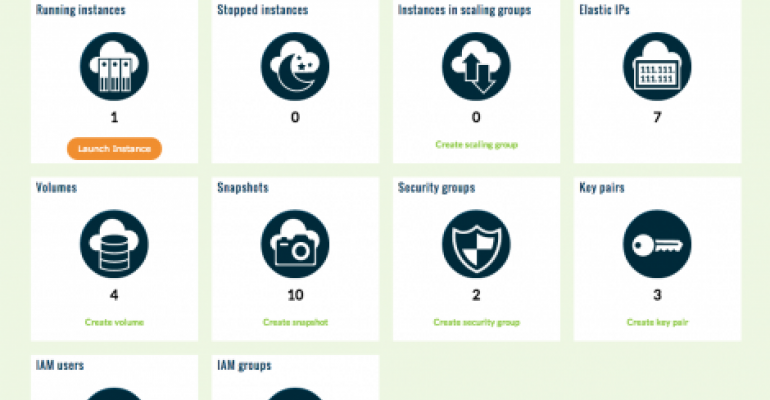Eucalyptus Systems, provider of open source software for building private and hybrid clouds compatible with Amazon Web Services, has released Eucalyptus 4.0. The release addresses network, storage and other pain points that occur as private or hybrid cloud deployments grow and builds on the software’s deep compatibility with AWS.
Enterprise-scale private clouds face some challenges as deployments grow. Growth can cause overload in the network that dramatically slows cloud application performance. Storage presents a major challenge, as it must scale with the cloud deployment.
Tim Zeller, vice president of sales and marketing at Eucalyptus, said most customers still used Eucalyptus for development and testing environments before deploying to Amazon.
"But we’re seeing more data analytics: they have a massive data set and want to run jobs on Eucalyptus," he added. "We’ve had some early adopters here but we’re seeing more people coming to the forefront.”
Customer feedback was the primary driver of the release, Zeller said. “There’s existing customers that have started small to medium in size, but the growth that they’re seeing internally for the service has grown immensely.“
The new features include:
- The release adds ability to use scale-out storage on top of commodity resources using open source and commercial solutions that implement the S3 interface (e.g. RiakCS, Ceph). The company has also partnered with Basho to resell and deliver commercial support for RiakCS Enterprise. The Object Storage Gateway allows users to leverage the active-active failover capabilities of their storage choice, simplifying large-scale deployments.
- Edge Networking simplifies cloud deployments by enabling the cloud to fit into existing network infrastructure. The goal is to make it easy to deploy Eucalyptus into existing network topologies. It also reduces potential bottlenecks by separating data and control paths, allowing more direct connection to cloud applications.
- Improved load balancing on the front end to support a large number of users. Clouds can now use multiple instances of front-end services to balance user traffic. Front end services are the endpoints that service API calls, such as EC2, S3, IAM. Deploying and load-balancing across many machines increases service availability and removes the potential for service bottlenecks.
- Dynamic cloud configuration is meant for those that outgrow existing infrastructure and need to move clouds. It allows administrators to change the configuration of cloud services (e.g. cloud controller, cluster controller) without reinstalling. This is used if a cloud has outgrown the capacity of a current network and needs to be installed in a larger network partition, or if a cloud needs to move due to IT consolidation or in the event of a merger or acquisition.
- The Eucalyptus hybrid cloud user console has been redesigned to improve user efficiency and support large-scale Eucalyptus deployments. The console is available through desktop, phone, or tablet. The user console was launched in 3.4, and the team took the 6-9 months of feedback since into the redesign.
- There is new support for multiple security groups and S3 bucket lifecycle, enabling consistent resource policies across clouds. Multiple security groups give users the ability to define and combine fine-grained network access rules. The Elastic Load Balancer service now supports SSL termination and session stickiness, helping users deploy secure, scalable cloud applications. Eucalyptus 4.0 includes additional improvements to API fidelity to expand the breadth and diversity of cloud workloads that can seamlessly shift between public and private clouds.





